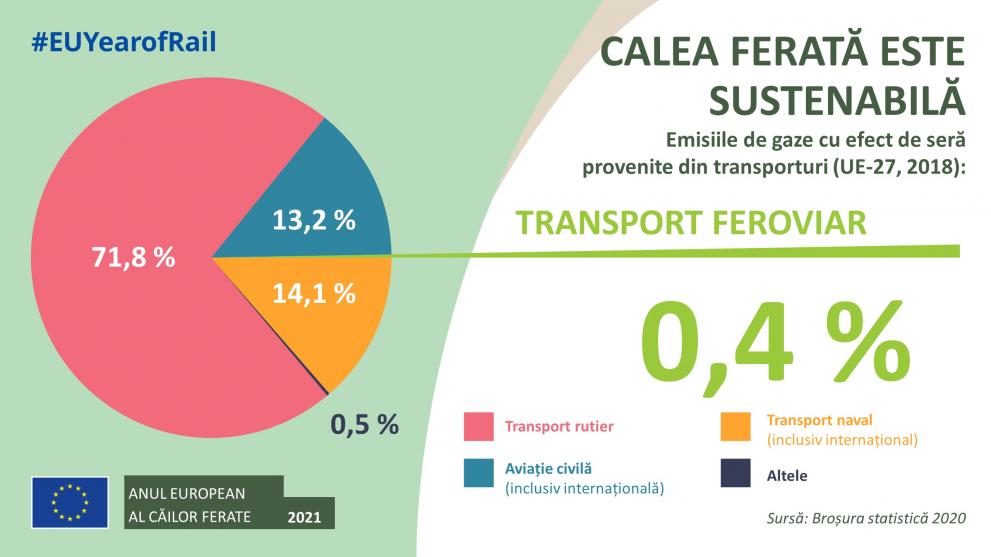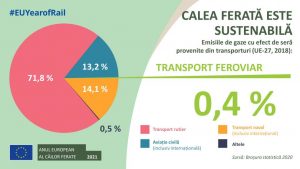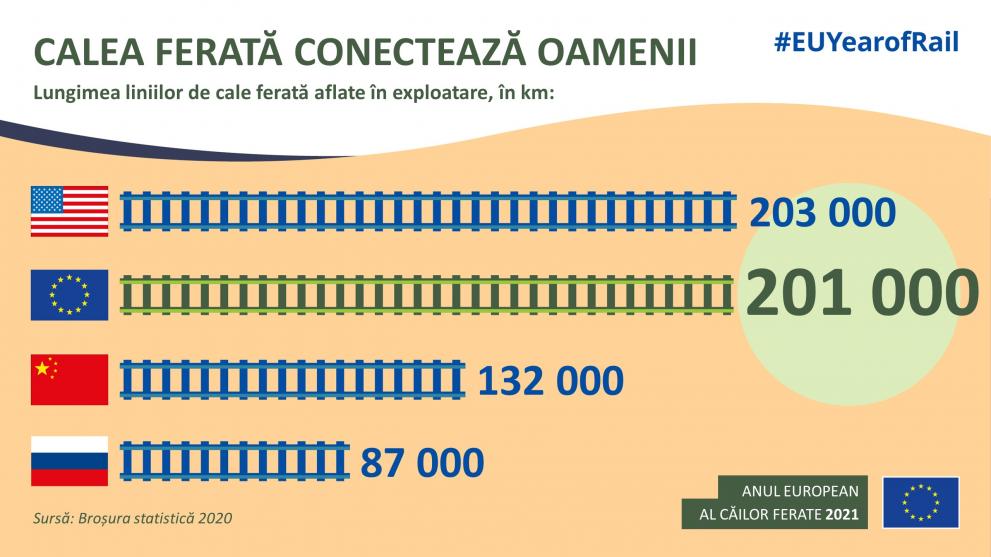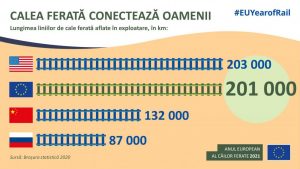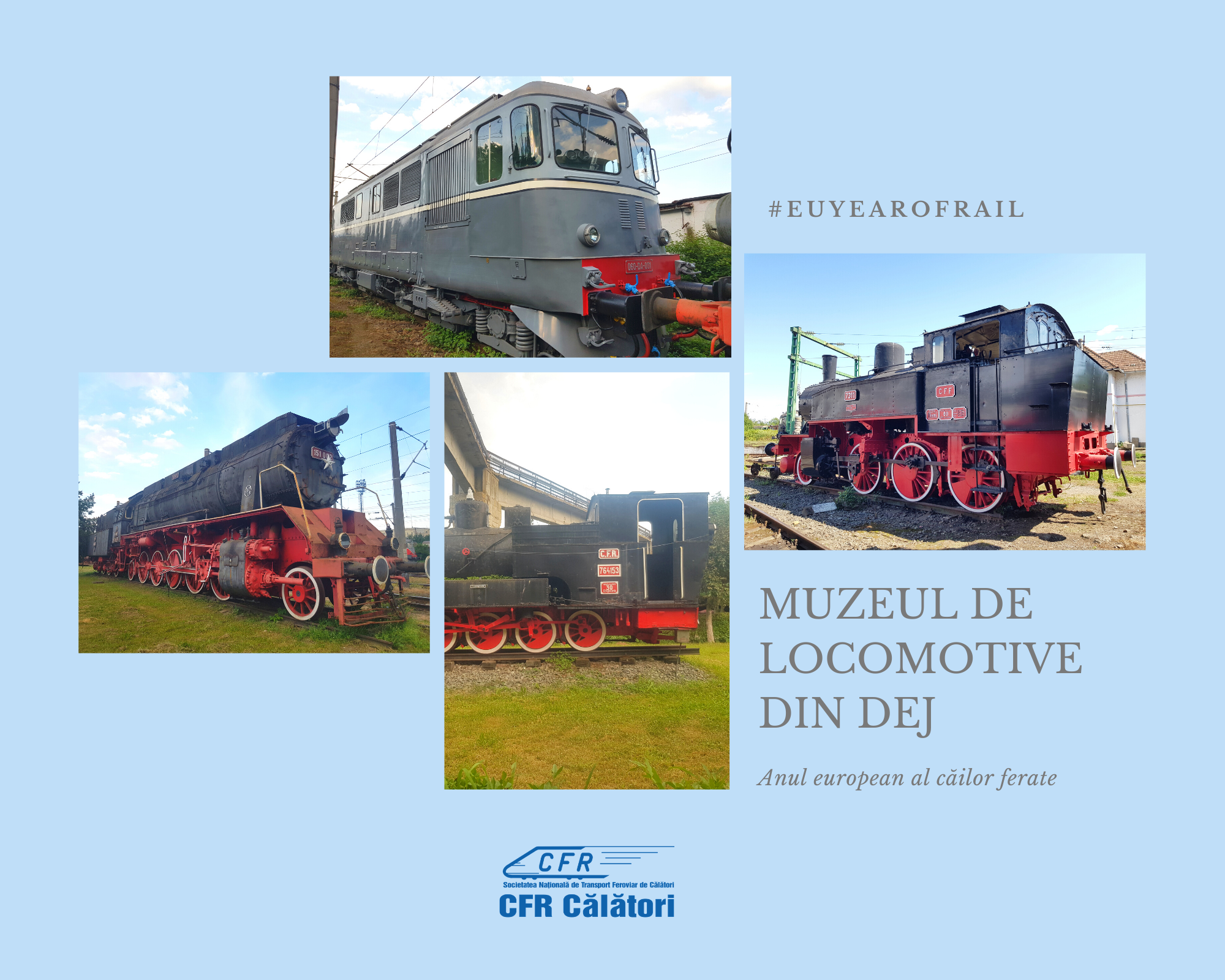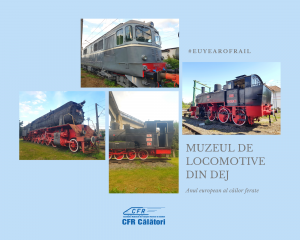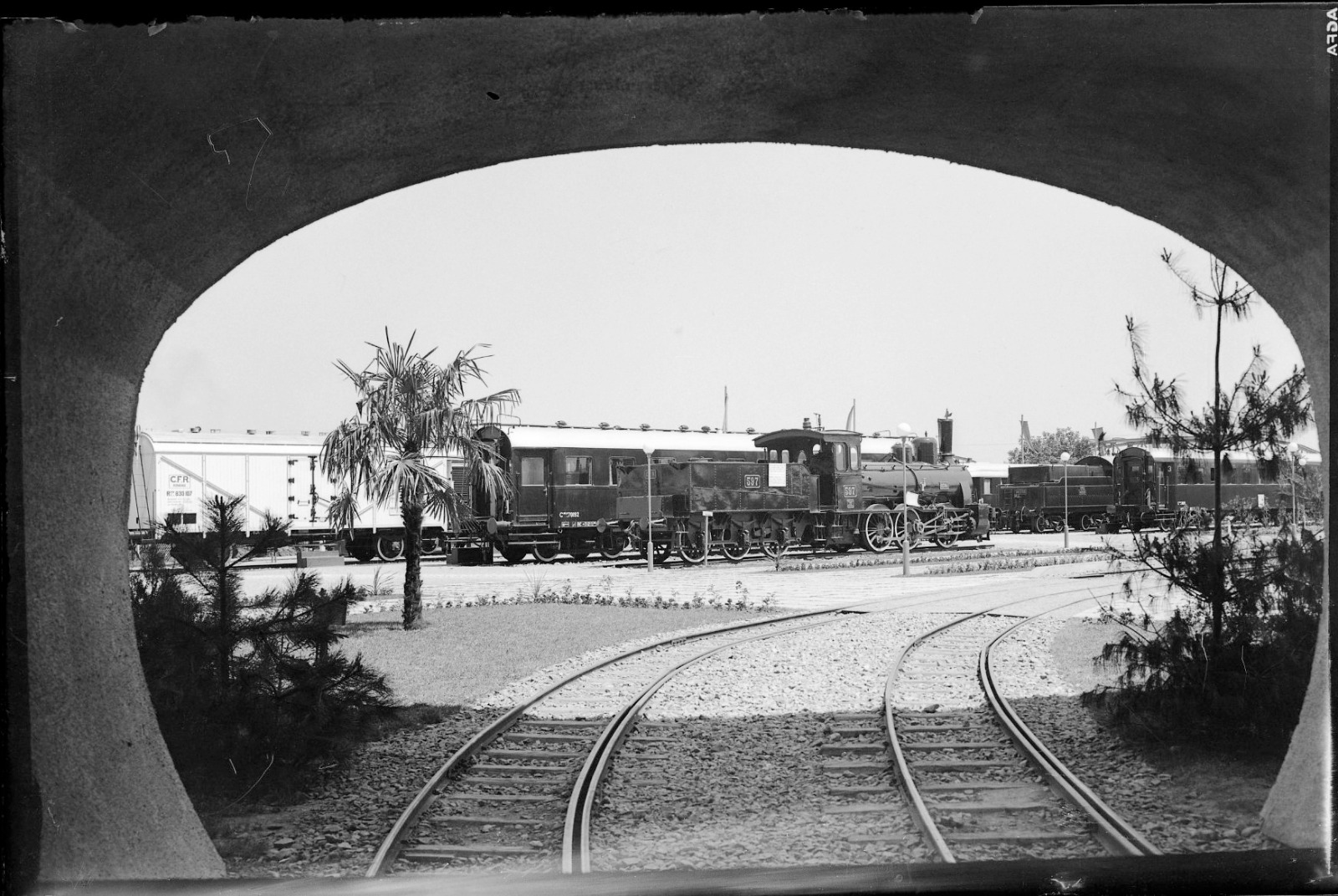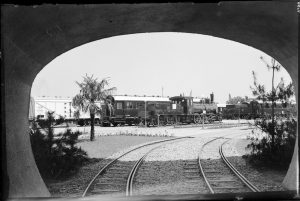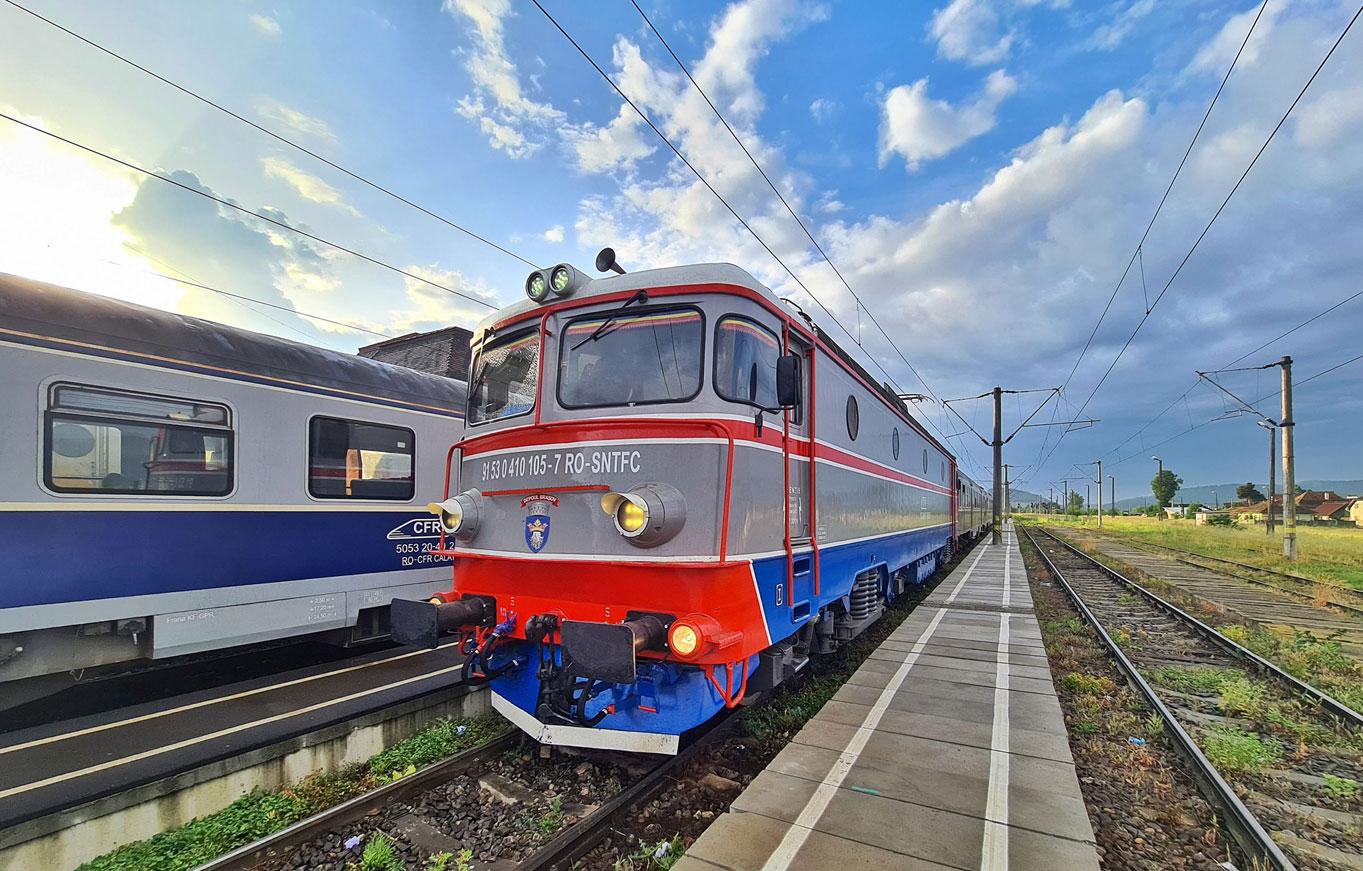Climate change and pandemic challenges require new approaches to limit the effects on the environment and climate, but also to revive the economic growth.
Both goals can be met by the rail transport. We all became aware in the last year that mobility is important to go to work, to school, to travel on vacation, to reunite with family and friends etc. Therefore, increasing the mobility of people and goods exchange is a viable opportunity to boost the economy, education and to facilitate the connection between people, communities, families, regions of the country and Europe.
Ensuring rail mobility provides alternatives to current and future difficulties, and to limit CO2 emissions, train journey must become a commonplace because it is the greenest means of transport.
You can find out the impact on the environment, produced by using different means of transport for trips to Europe, by accessing the program ECOPASSENGER
(http://ecopassenger.org/bin/query.exe/en?L=vs_uic).
The application is developed by the International Union of Railways and allows the comparison of air, car and rail journey routes, by calculating the energy consumption, CO2 emissions and other pollutants (nitrogen oxide emissions, particulate emissions, hydrocarbon emissions), for each selected route. Any route of interest can be entered and the application will highlight the emissions by modes of transport.
We can all contribute to the fight against climate change and economic growth. Get on the train! The future is the railway.
#EuropeanYearofRail2021
#EUYearofRail
Did you know that?
- 1965 – 1966 – The electric traction was put into operation on Braşov – Predeal section. On April 20, 1966, Predeal – Câmpina section was put into operation, and on February 16, 1969 the entire electrified main line Braşov – Bucureşti (170 km) was officially inaugurated. For the electric traction, 10 Co-Co locomotives of 5100 kW were delivered by the Swedish company ASEA. In December 1965, the first inaugural train on Predeal – Brașov section was hauled by the first electric locomotive EA 001.
Other articles on the same subject:
CFR Călători, partner of Connecting Europe Express! click here
The future of transport is the railway – Chose the railway! click here
Romania – Founding Member of the International Union of Railways! click here
Railway transport – the Most Ecologic Type of Passenger Transport in Europe click here
Steam locomotives museum in Reșița click here
The “Ceferiada” Event click here
Steam locomotives museum in Dej click here
Rail transport connects Europe click here
The TRAIN = The railway transport is cleaner click here
140 years from the first railway built entirely by Romanian engineers click here
The railway connection of the Capital with the East and the West, in the beginning click here
The beginning of railways in Europe click here
Explore the railway route Suceava – Putna click here
The history of the royal train – CFR Călători click here
The Danube Cliff and the Filești Tunnel in the European Year of Railways click here
The Filiași – Bumbești – Livezeni railway click here
The Caracău Viaduct – the largest concrete arched viaduct in Romania click here
The Royal Station of Bucharest Băneasa click here



